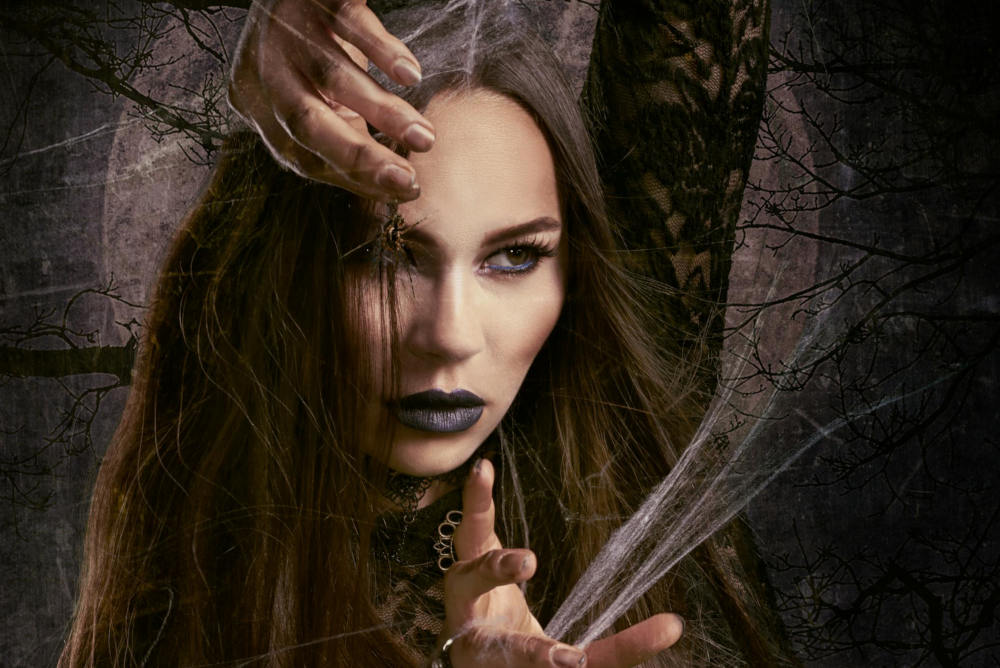
Seit Jahrhunderten werden Hexen gefürchtet, verfolgt und missverstanden. Das Wort „Hexe“ beschwört Bilder dunkler Mächte, finsterer Rituale und gefährlicher Pakte mit dem Teufel herauf. Doch woher stammen diese Vorstellungen? Und sind sie zutreffend? Die Wahrheit über Hexen ist weitaus komplexer – und weit weniger unheilvoll – als die Populärkultur oder jahrhundertelange Verfolgung vermuten lassen.
Die Ursprünge des Hexenarchetyps
Der Begriff „Hexe“ leitet sich von den altenglischen Wörtern „wicca“ (männlich) und „wicce“ (weiblich) ab und bezeichnet eine Person, die Hexerei oder magische Künste praktiziert. Lange bevor sie mit dem Bösen in Verbindung gebracht wurde, war Hexerei oft Teil des Alltags. In alten Gesellschaften waren Heiler, Kräuterkundige, Hebammen und Schamanen angesehene Persönlichkeiten in ihren Gemeinschaften. Sie nutzten natürliche Heilmittel und spirituelle Rituale, um anderen zu helfen – kaum das Werk böser Wesen.
In vielen alten Kulturen waren magische oder spirituelle Praktiken nicht nur akzeptiert, sondern fester Bestandteil des religiösen und gemeinschaftlichen Lebens. Die alten Ägypter, Babylonier, Griechen und Römer kannten alle Formen der Magie, die das Anrufen von Göttern, das Wirken von Zaubersprüchen oder das Anwenden von Zaubersprüchen beinhalteten. Diese Praktiken wurden in der Regel nicht als böse angesehen, sondern als Teil des Verständnisses und der Interaktion mit den Kräften der Natur und des Göttlichen.
Christentum und die Dämonisierung von Hexen
Die Vorstellung, Hexen seien von Natur aus böse, gewann mit dem Aufstieg des Christentums in Europa an Bedeutung. Mit der Ausbreitung der neuen Religion versuchte sie, heidnische Traditionen zu beseitigen, zu denen viele magische oder naturbezogene Praktiken gehörten. Religiöse Autoritäten begannen, diese älteren Traditionen als ketzerisch oder dämonisch zu bezeichnen.
Im Mittelalter brachte die christliche Theologie Hexen zunehmend mit Satan in Verbindung. Dies gipfelte in der weit verbreiteten Angst, Hexen stünden mit dem Teufel im Bunde und praktizierten schwarze Magie, um anderen zu schaden und die christliche Gesellschaft zu untergraben. Der Malleus Maleficarum , ein Handbuch aus dem 15. Jahrhundert zur Identifizierung und Verfolgung von Hexen, verstärkte diese Angst. Verfasst von Heinrich Kramer, einem dominikanischen Inquisitor, beschrieb es Hexen als böse Frauen, die nachts durch die Luft flogen, Säuglinge töteten und Satan anbeteten. Das Buch wurde ein Bestseller und zum Werkzeug der Hexenjagd.
Die im Malleus Maleficarum aufgestellten Behauptungen beruhten jedoch nicht auf tatsächlichen Beobachtungen oder Geständnissen, sondern auf einer Mischung aus Frauenfeindlichkeit, Angst und religiösem Extremismus. Das Buch trug zum Hexenwahn bei, der in ganz Europa und im kolonialen Amerika zur Folter und Hinrichtung Zehntausender Menschen, meist Frauen, führte.
Frauenfeindlichkeit und Hexenjagd
Die Verbindung zwischen Hexen und dem Bösen rührt größtenteils von tief verwurzelter Frauenfeindlichkeit her. Die meisten der Hexerei Angeklagten waren Frauen – insbesondere ältere, verwitwete oder sozial isolierte Frauen, die nicht den Normen der Zeit entsprachen. In einer patriarchalischen Gesellschaft wurden Frauen, die freimütig, unabhängig oder in der Kräuterheilkunde bewandert waren, oft als bedrohlich empfunden.
Die Hexenjagden boten eine Möglichkeit, Frauen zu kontrollieren und zum Schweigen zu bringen, insbesondere diejenigen, die den Status quo in Frage stellten. Als Hexe bezeichnet zu werden, wurde zu einer bequemen Anschuldigung, um jemanden aus der Gesellschaft auszuschließen, persönliche Grollgefühle zu begleichen oder Unglücke wie Missernten oder plötzliche Todesfälle zu erklären.
Die Vorstellung, Hexen seien böse, hatte also eher mit sozialer Kontrolle zu tun als mit tatsächlichen böswilligen Praktiken. Sie spiegelte Ängste vor weiblicher Macht, Veränderung und dem Unbekannten wider.
Hexerei auf der ganzen Welt
Außerhalb Europas und Nordamerikas hat Hexerei ganz andere Bedeutungen. In vielen indigenen Kulturen sind Magie und spirituelle Arbeit Teil traditioneller Heil- und Religionspraktiken. Schamanen, Medizinmänner und spirituelle Führer gelten als weise und mächtig – nicht als böse.
In traditionellen afrikanischen Religionen wird beispielsweise zwischen hilfreichen spirituellen Praktiken und schädlicher Zauberei unterschieden. Die Kolonialmächte verstanden diesen Unterschied jedoch oft nicht und fassten alle Praktiken unter dem Begriff „Hexerei“ zusammen. Damit wurde die Vorstellung gefördert, alles Spirituelle außerhalb des Christentums sei böse.
Auch in Indien werden Hexereivorwürfe dazu genutzt, schutzbedürftige Frauen auszugrenzen und anzugreifen. In einigen Stammesgebieten werden Frauen noch immer als Hexen gebrandmarkt und Gewalt oder Ausgrenzung ausgesetzt.
Diese Beispiele zeigen, dass der Glaube an Hexen und Magie eher von kulturellen und politischen Faktoren als von einer universellen Wahrheit geprägt ist.
Moderne Hexerei: Wicca und darüber hinaus
Im 20. Jahrhundert erlebte die Hexerei einen tiefgreifenden Wandel. In den 1950er Jahren entstand die spirituelle Bewegung Wicca, die vom britischen Beamten Gerald Gardner populär gemacht wurde. Wicca ist eine moderne heidnische Religion, die Harmonie mit der Natur, Ehrfurcht vor dem Göttlich-Weiblichen und die Ausübung von Magie zur persönlichen Weiterentwicklung und Heilung betont.
Wiccans glauben an das ethische Prinzip des „Dreifachen Gesetzes“ – dass jede Energie, die man aussendet, ob positiv oder negativ, dreifach zu einem zurückkehrt. Diese Idee rät dringend davon ab, Schaden anzurichten, und fördert einen verantwortungsvollen Umgang mit magischen Praktiken. Die meisten Wiccans und modernen Hexen folgen der Regel: „Tu, was du willst, aber schade niemandem.“
Moderne Hexen gibt es heute in allen Gesellschaftsschichten. Sie sind Ärztinnen, Lehrerinnen, Künstlerinnen und Aktivistinnen. Viele bezeichnen sich als spirituell, aber nicht religiös und suchen persönliche Stärkung durch Rituale, Kristalle, Kräuter, Meditation und Mondzyklen. Manche folgen der Wicca-Bewegung, während andere ihren eigenen Weg gehen, beeinflusst von alten Traditionen oder moderner Psychologie.
Die meisten modernen Hexen sind nicht böse, sondern legen großen Wert auf Heilung, Gleichgewicht und Selbsterkenntnis.
Warum das Stereotyp des Bösen weiterhin besteht
Trotz des modernen Verständnisses ist das Bild der bösen Hexe tief in der Popkultur verwurzelt. Märchen, Horrorfilme und Halloween-Dekorationen stellen Hexen weiterhin als hässlich, grausam und gefährlich dar. Das Klischee der „bösen Hexe“ ist leicht zu erkennen und schwer abzuschütteln.
Diese Darstellungen spiegeln oft tiefere Ängste wider – vor weiblicher Macht, vor dem Unbekannten oder vor Menschen, die außerhalb des Mainstreams leben. In Wirklichkeit ist die Vorstellung, Hexen seien böse, ein Mythos, der auf Jahrhunderten von Missverständnissen, Angst und sozialer Unterdrückung beruht.
Das Wort „Hexe“ zurückerobern
In den letzten Jahren haben viele Menschen – insbesondere Frauen, LGBTQ+-Personen und marginalisierte Gemeinschaften – begonnen, das Wort „Hexe“ als Symbol der Ermächtigung und des Widerstands wiederzuentdecken. Die Hexe wird als jemand gesehen, der Autoritäten herausfordert, persönliche Macht annimmt und im Einklang mit der eigenen Wahrheit lebt.
Bücher, Fernsehsendungen und Online-Communitys haben diese neue Vision der Hexe aufgegriffen: nicht als Monster, sondern als Heilerin, Lehrerin oder Rebellin. Die moderne Hexe ist nicht jemand, den man fürchten muss, sondern jemand, von dem man lernen kann.
Diese Rückbesinnung hilft uns auch, das historische Trauma, das durch jahrhundertelange Verfolgung entstanden ist, zu verarbeiten und zu verarbeiten. Indem wir die wahre Geschichte der Hexerei verstehen und alte Stereotypen loslassen, können wir eine umfassendere und mitfühlendere Sicht auf Spiritualität entwickeln.
Fazit: Sind Hexen böse?
Die Antwort lautet nein – Hexen sind nicht grundsätzlich böse. Die Vorstellung, dass sie es sind, ist ein Mythos, der auf Angst, Unwissenheit, religiöser Verfolgung und kulturellem Missverständnis beruht. Von alten Heilern bis hin zu modernen spirituellen Suchern waren diejenigen, die als Hexen bezeichnet wurden, oft weise, intuitiv und mit der Natur verbunden.
Indem wir Fakten von Fiktion trennen, erkennen wir, dass es bei Hexerei nicht darum geht, anderen zu schaden, sondern um persönliche Ermächtigung, Heilung und spirituelle Erforschung. In einer Welt, die immer noch mit Ungleichheit, Intoleranz und Angst vor dem Unbekannten zu kämpfen hat, brauchen wir vielleicht mehr Hexen – nicht weniger.
War dieser Artikel hilfreich für Sie? Bitte teilen Sie uns in den Kommentaren unten mit, was Ihnen gefallen oder nicht gefallen hat.
About the Author: Alex Assoune
Wogegen Wir Kämpfen
Weltweit-Konzerne produzieren in den ärmsten Ländern im Übermaß billige Produkte.
Fabriken mit Sweatshop-ähnlichen Bedingungen, die die Arbeiter unterbezahlt.
Medienkonglomerate, die unethische, nicht nachhaltige Produkte bewerben.
Schlechte Akteure fördern durch unbewusstes Verhalten den übermäßigen Konsum.
- - - -
Zum Glück haben wir unsere Unterstützer, darunter auch Sie.
Panaprium wird von Lesern wie Ihnen finanziert, die sich unserer Mission anschließen möchten, die Welt völlig umweltfreundlich zu gestalten.
Wenn Sie können, unterstützen Sie uns bitte monatlich. Die Einrichtung dauert weniger als eine Minute und Sie werden jeden Monat einen großen Beitrag leisten. Danke schön.































0 Kommentare